-
Posts
348 -
Joined
-
Last visited
-
Days Won
2
Content Type
Profiles
Forums
Resource Library
Events
Gallery
Blogs
Store
Community Map
Posts posted by 2996 Victor
-
-
Jane and I had a lovely trip on the Lynton & Barnstaple Railway at Woody Bay today. The weather was perfect: sunny, just a light breeze. "Lyn" was in fine fettle with her beautiful 3-coach set.
It was just a bit of a shame that there weren't more visitors: hopefully tomorrow will be better as they're doing Easter-related things for the younger ones.
And I came away with the long-desired Heljan model of "Lyn" in her pre-1906 livery
 The box has been carefully opened and the prize within uncovered. But not handled, just looked at
The box has been carefully opened and the prize within uncovered. But not handled, just looked at 
I'll post some photos once we're home again.
Cheers,
Mark
-
 4
4
-
-
There's been a sneaky little bit of progress on the pub, aka The Prospect Inn, which sits at the back of the scene toward the right-hand end, next to the row of houses.
I'm finishing it as a Starkey, Knight & Ford house, as they were a brewery local to where I grew up. My great-grandfather was landlord of the pub in the village I lived in as a child, taking it on in 1936, the family relinquishing it in 1968. It was a Starkey, Knight & Ford house, and their house colours were white with black trim. A large number of their pubs seem to have been rough-cast rendered as was "ours" so I was looking for a way to replicate that in a not-too-obvious way.
Initially, I thought of sandpaper, and did go so far as to cover the building in some 180 grade but the window and door openings were a bit of a problem. Then I thought of that sandtex masonry paint, which led me by a roundabout route to some dark and cobwebbed recess of my mind where I'd filed away textured spray paint. A quick trawl through eBay and up popped Rust-oleum textured paint and a can was duly ordered.
So here we are. The pub building has been given three or four coats according to the instructions and that was the end of that can! However, it's exactly what I wanted:
And once that was touch dry (impatient as always) it was given a deliberately slightly patchy coat of Tamiya white acrylic:
which I hope you will agree looks like the real thing
 ish!
ish!
Onward and upward!
Cheers,
Mark-
 10
10
-
-
1 hour ago, Patrick Davey said:
More progress - brick pillars topped off with capstones and lifebelts provided above and beside the culvert. Also some weeds added, along the wall and between some of the setts and pavers.
Fab workmanship, Patrick, just the right degree of greenery makes those setts and slabs look so convincing. The whole scene is looking really superb!
Cheers,
Mark-
 1
1
-
 1
1
-
-
1 hour ago, Georgeconna said:
A simple roundy with hills and Scenery, with a station and loop, Siding for the ol fella, Have the Woody Bat Station and Some Tunnel Mouths I had bought some time back. As I have the boat finished I might knock some board up when the good weather comes.
Yours looks very interesting TBH.
Sounds great, George! I'll look forward to seeing it progress
 have you been to Woody Bay? We're having a weekend away over Easter, staying in Lynton, and a visit to the L&B is a definite!
have you been to Woody Bay? We're having a weekend away over Easter, staying in Lynton, and a visit to the L&B is a definite!
Cheers,
Mark
-
-
54 minutes ago, Georgeconna said:
Oh Fab!! Have 2 Mannings myself but yet to get the wood sorted out.
Hi George,
What sort of layout are you planning? I did have a Manning but sold it a couple of years ago as I need the cash at the time! I need to "invest" in another one
 To backdate the cab, I'd like to get hold of the Backwoods kit as that has the early cab in etched brass; failing that I'll make one myself and modify the body moulding. But I expect Lyn will be the first loco to make an appearance!#
To backdate the cab, I'd like to get hold of the Backwoods kit as that has the early cab in etched brass; failing that I'll make one myself and modify the body moulding. But I expect Lyn will be the first loco to make an appearance!#
I'm still tinkering with the point-work and the siding layout, but I've ordered a couple of wagon turntables to go in front of the archway warehouse. They won't be operational, though!
Cheers,
Mark -
48 minutes ago, Mayner said:
If you want to get something running fairly quickly an option may be to focus on building the layout while using available ready to run locos and rolling stock while you develop skills and gain experience converting rtr models, kit or scratch building. Irish railway infrastructure and operating practices changed very little between the early 1900 and mid 1970s when freight handling was rationalised and CIE began upgrading track and signalling.
Another option is to try something small in O Gauge Alphagraphix/Tyrconnell produce kits of 2-2-2T Fairy, the GSR version of the E Class, MGWR 6 Wheel coaches and card kits of the Horsebox and Convertible wagon.
Very good advice, if I may say so! Just to add that the Alphagraphix CC-prefixed rolling stock card kits are available from Roger in 4mm/OO scale - just add 400 to the catalogue number so that kit number CC17, for instance, becomes CC417.
Cheers,
Mark-
 1
1
-
-
The baseboards are laser-cut kits from Grainge & Hodder, who have a range of modular sizes but who will also design to your specifications. Initially, this board was intended for a different project, and started out at 1m long x 0.3m wide. When I started out on this, I soon realised it wasn't really wide enough so ordered an extension board to go at the back. This arrived toward the end of last week and was assembled, and was then fitted to the "main" board yesterday by drilling, gluing and bolting together. I still need to order the fiddle yard boards, but there's no immediate hurry for those.
This project has been underway since early last December, and rather than being "designed" is evolving in a slightly Darwin-esque way
 If you really want to be bothered, you can see all the previous drivel on my NGRM Online thread here but to be honest, apart from the inset track at the front of the layout, I'm virtually starting again.
If you really want to be bothered, you can see all the previous drivel on my NGRM Online thread here but to be honest, apart from the inset track at the front of the layout, I'm virtually starting again.
This is the current state of play. Almost bare boards with all previous cork track bed scraped off (what a blooming job!). The inset track at the front is PECO N Code 55, and is fixed and wired:

Having fixed the timber baulk "buffers" to the quay wall yesterday, today I wasn't very happy with them - they're too skinny - so they've been unceremoniously ripped off again they'll be replaced with something heftier. The 25mm square pine strip at front will be the edge of the river, probably just 'orrible mud.
they'll be replaced with something heftier. The 25mm square pine strip at front will be the edge of the river, probably just 'orrible mud.
And here is the current iteration of the track layout with the buildings I've got underway:

There'll be a couple of wagon turntables in front of the archway warehouse at the left back. The tracks hanging off the nearest end will mate with a sector plate, of course. Lots more buildings to add!Thanks for looking in
 cheers for now,
cheers for now,
Mark
-
 4
4
-
-
Welcome to my Lynton & Barnstaple micro layout build thread.
The Lynton & Barnstaple Railway was a narrow gauge railway built between those two North Devon towns. It opened in 1897 and ran as an independent company until the Grouping in 1923, when it came under the control of the Southern Railway. It was closed in 1935, but a 1-mile section of track has been re-opened by the new Lynton & Barnstaple Railway as a heritage steam railway. The new company fully intend to rebuild the whole line and is making great strides with that purpose. Have a look at their website here if you're interested in this amazing project.
This layout is/will be a micro/cameo layout portraying a small fictitious quay scene ostensibly in a Barnstaple backwater. Track will be Code 55 flat bottom rail, a combination of paved (i.e. inset) PECO N track and hand-built track. Hopefully, the latter will look a bit more like the real thing than the usual Toytown narrow gauge track available commercially, and will avoid the "RSJ rail" look!
The layout is set in 1905 when the line was relatively new. This will allow me to run a Manning Wardle 2-6-2T in early cab condition and in the pale green livery. Locomotives and rolling stock will be mostly RTR PECO and Bachmann with a few 3D-printed and kit-built wagons thrown in courtesy of Custom OO9 and Dundas respectively; A/M chopper couplings that look a bit more like the real thing are planned.
Overall sizes: the scenic board is 1m long x 0.5m wide, fiddle yard boards will be 0.5m x 0.5m.
Thanks for looking in!
There'll be some pics soon, but cheers for now,
Mark
-
I meant to add that if you're going the OO route, it might be worthwhile considering the PECO bullhead track range as the rail height, sleeper size and spacing is so much better than their "normal" track, which is effectively HO track. These are the two types side-by-side:
Alternatively, you could use SMP OO flexi-track and Marcway points, probably a little more expensive than than the PECO but a little more realistic still.
Just a thought!
Cheers,
Mark
-
 4
4
-
-
Hi @Jb1911,
welcome to the forum - I'm sure you'll find everyone every bit as friendly, helpful and knowledgeable as I have. It's a great place full of great folk!
@Galteemore has been very kind, but I really do have to say that I'm certainly no expert on the MGWR: everything I know (and lots that I've already forgotten) is entirely thanks to the people on here. John @Mayner and Jonathan @jhb171achill are the experts who know all there is to know.
You might want to have a look through my layout build thread - link in my signature - as I've asked loads of newbie questions and got excellent answers to each and every one. There are also various books mentioned, but as a starting point, there are these:
- The Midland Great Western Railway of Ireland: An Illustrated History by Ernie Shepherd, Midland Publishing Ltd
- Irish Railways in Pictures No.2: The Midland Great Western Line by the Irish Railway Record Society London Area
- Rails to Achill by Jonathan Beaumont, Oakwood Press
- Rails through Connemara by Jonathan Beaumont, Oakwood Press
- Modelling Irish Railways by Stephen Johnson and Alan O'Rourke, Midland Publishing Ltd
There were also some articles by David Malone in the short-lived RailModel Digest magazine: issues #1, #2, #3 and #6 are worth seeking out.
New Irish Lines magazine published by Alan O'Rourke is also well-worth its subscription, link here
Hope this helps and by all means ask me any questions you like - I'll try to answer!
Good luck with your project,
Mark
-
 4
4
-
4 hours ago, David Holman said:
Interesting! Seems I need to go back to school...
While I love reading about all the latest innovations in the hobby, guess I am (reasonably) happy with the skills I have learned, in that they enable me to do what I need.
CAD seems a big step forward in terms of learning and while I can see the advantages of being able to design something that can be printed, etched, laser cut etc, I still enjoy the practical side of just doing things by hand. However, also think it is brilliant to see modellers developing and using new techniques. Just go for it!
I don't know about going back to school - it seems to me that the way to a satisfying hobby is doing what you like and what you enjoy! And I think your results bear that out in spades, if I may say so!
And I'm with you on doing things by hand - scratch-building a wagon, for instance, is immensely satisfying but I've tried to batch-build three or four of the same vehicle in the past and I just get bored with it
 where kits aren't available, I think that's where 3D-printing really scores.
where kits aren't available, I think that's where 3D-printing really scores.
As for Templot, it's really "just another tool", and it serves an extremely useful purpose for setting out your point-work particularly where its on a curve or its particularly complex. Which I'll just leave to those who can do that sort of thing.....

Cheers,
Mark
-
 3
3
-
-
Fantastic work on the cobbles - more like setts, if I may say so - but no doubt about the superb outcome!
Cheers,
Mark
-
8 hours ago, Angus said:
I think Templot gets a bit of a bad reputation because it not the shiny user-interfaced type of software we are all used to and doesn't compare well to snap-together type track planning tools such as AnyRail.
But then it is design for a totally different job and it has developed considerable since its launch.
It does take time to learn but there are lots on line tutorials and its own support forum, I would be lost without it, particular for odd scale/gauge combinations but I also use for standard UK 2mm finescale also.
I'd encourage perseverance! Just printing off templates misses the power of the tool in the fact that point and crossings can be curved and adapted to give a much more flowing (and realistic) appearance.
There are a series of tutorials on the 2mm scale association YouTube channel which may help?
Exactly, @Angus - I've just mentioned above that this is my third or fourth try at Templot, but its the first time I've got something meaningful out of it. All because previously I've expected it to perform like a CAD programme. The best thing I did this time was carefully read Martin's preamble at which time I had a light-bulb moment: basically, it ain't a CAD programme so don't treat it like one! And also that Templot's purpose is to design point-work, not layouts (although it can do that as well).
Once I'd grasped that, it was a short step to producing my first 21mm gauge template, and then a double slip and a tandem. I've also produced a ladder for my OO9 micro. All these I've adjusted to incorporate EMGS standards, and its a joy to see the control template actually changing to confirm.
My biggest eye-opener so far was attempting to rotate a RH turnout and tack it onto the slip: when it did it for me simply by dragging the connecting track centres together was an absolute "Wow!" moment. That's when I realised that Templot is incredibly clever and intuitive. And I've barely scratched the surface!
If anyone is looking for the right tool to design their point-work, Templot is it! Read Martin's notes and watch the tutorials and prepare to be amazed!
Cheers,
Mark
-
 2
2
-
 1
1
-
-
23 hours ago, David Holman said:
The only time I used Templot was to print a left and right hand point plan for Fintonagh. Used the 'Irish EM', 20.2mm gauge version, which I enlarged to 21mm on the copier.
Sounds like I got off lightly!
Ha ha
 it certainly seems to be best approached with an open mind - it doesn't operate like other programmes we use regularly. I've been an AutoCAD user for thirty years now, and I approached Templot as if it were a CAD programme. But now on my third or fourth go it's finally penetrated my ivory dome that it doesn't work that way
it certainly seems to be best approached with an open mind - it doesn't operate like other programmes we use regularly. I've been an AutoCAD user for thirty years now, and I approached Templot as if it were a CAD programme. But now on my third or fourth go it's finally penetrated my ivory dome that it doesn't work that way  And even on a short acquaintance it looks like a tool that's worth learning to get the best from.
And even on a short acquaintance it looks like a tool that's worth learning to get the best from.
Cheer,
Mark
-
 1
1
-
 1
1
-
-
Stunning work! The entire train, loco and carriages, looks beautiful.
Jealous? Moi?

Cheers,
Mark
-
 1
1
-
-
Well, following Ken @KMCE's pointers, I've had another little play with Templot and to be honest I think it'll repay a further investment in time. However, in the meantime I've managed to export my point templates in .dxf format and insert them into the CAD drawing of the layout that I'd started.
With a bit of jiggery pokery to my initial CAD work, the Templot templates have slotted in nicely. There's still a fair bit of tweaking to do but.....I think the layout will fit into the space I have available. I'll post an image of the CAD/Templot design over the weekend.
Cheers,
Mark
-
 3
3
-
-
11 hours ago, KMCE said:
You're in good company here - I really struggle with Templot and basically use it to generate templates for points which can then be exported in .dxf format and then imported to CAD. I use the templates with some basic lines representing running lines while trying to establish track plans in CAD. I have given up trying to develop a full track plan in Templot - I think I saw somewhere a comment from the developer that it was not intended for full track plans, but more for difficult elements and templates?
I've tried it several times, downloading it and trying to get going, but not managed to make any sense of it. This time, I've done rather better and actually managed to create the LH point and double slip complex in my sketch plan, together with some OO9 point work for my Lynton & Barnstaple micro. But as Martin Wynne says somewhere on the Templot site, its not a CAD programme and I think that's the problem for CAD users. It seems a very clever programme in the way it aligns and connects different templates, and I think its well worth investing time in. BUT.....I didn't know the templates could be exported in .dxf format - that's something I can definitely use now, so a huge thank you for that pointer!
11 hours ago, KMCE said:As to point nomenclature, basically A to F - short to long, 5 - 12 crossing angles (1:5 to 1:12 sharpest to smoothest), so while an A6 & B6 technically do have the same crossing angles, the run up to the crossing is longer, thus smoother with the B type point. I know from experience that my locos and rolling stock much prefer the longer point!
That makes perfect sense, thank you - I guess it would be fair to say that its always going to be kinder to locos to use the highest letter number possible for a given crossing angle. I've been looking at the minimum radius thingy on Templot and could understand why it was so tight, but it was an A8 point and looking at it closely there's a nasty sharp bit halfway between the switch and crossing.
11 hours ago, KMCE said:Hope that helps.
Definitely! Thanks, Ken, its hugely appreciated

Cheers,
Mark
-
 1
1
-
-
14 minutes ago, KMCE said:
Hello Mark,
I am working to P4 standards and am a member of the Scalefour society. As you have seen on another topic, I have been developing 3D printed track and point work, hence why I know the dimensions of A & B type points.
Using P4 standards I have found that anything over 4 coupled will require at least A, and preferably B type points to run smoothly. The Port Breige layout uses a Y point to try to reduce space, but that still has an 800mm radius, which is workable for short 4 coupled locos. The recent J26 loco just gets through in one direction, try change to the other & the first axles have a tendency to ride up over the track.
Other layouts with longer points are more suited to larger locos & I am developing plans for a larger layout (still portable) with B6 points which I will show here once I have settled on the layout and build.
Hope this is of assistance.
Ken
Hi Ken,
many thanks for your reply - apologies, I'd forgotten that you're working to P4 standards!
I must admit to ignorance when it comes to point work and the crossing angles/radii involved although I'm attempting to get to grips with Templot, which is fairly baffling although I think I can do enough to plan my layout properly. CAD is all very well and helpful in general laying out, but it doesn't account for the nuances of track design.
I have to admit that I don't yet understand the differences between, say, A6 and B6 points when the common crossing is the same angle.
Cheers,
Mark
-
12 hours ago, KMCE said:
and working with 21mm myself
Hi again, Ken,
I meant to ask what standards you're working to? I was thinking of using EM standards, i.e. 1mm flangeways, largely as I'm a member of the EMGS. I'd be grateful for your thoughts.
Cheers,
Mark
-
3 minutes ago, David Holman said:
Very much the sort of thing I have in mind for Northport Quay, Mark and certainly looks very effective. The list of colours to be used very helpful too.
Hi David,
glad its of interest! If you should like to see a bit more detail, I've got a thread running on NGRM-Online here where I go into unbearable detail about the process from about halfway down Page 1

Here's another pic which I think shows the results a bit better:

As a process, the scribing doesn't actually take that long, and its really rather cathartic

I might start a thread on here in the British Railways section (if anyone's interested).
Cheers,
Mark
-
 2
2
-
 1
1
-
 2
2
-
-
8 minutes ago, KMCE said:
If it is of any use, Scalescenes https://scalescenes.com/ are good for both buildings, & in the scratchbuilding section, different types of materials are most useful.
I really like this layout - lots of operating potential, and well spread out as per Irish prototype. I note from the title you are considering 21mm track and working with 21mm myself I would consider the space needed for points. A6 point in 21mm gauge is 300mm long, while a B6 is 325mm long, thus a crossover using B6 points will take 650mm. Looks excellent but takes up a lot of space! I don't know the space you have to work with, but hopefully you will have enough to develop this & I look forward to progress.
Ken
Hi Ken,
Many thanks for the pointers - I'd completely forgotten about Scalescenes, so I'll have a look at there products asap.
I've got a copy of AutoCAD, so I've started drawing up the layout plan to scale - so far it's looking like it's a "go". I've got 3.6m clear length in my hobby room which will hopefully be okay for the scenic section. I'll have to measure the points and see if I'm anywhere near your dimensions..... If you hear a scream, that'll be me

Incidentally, I'll be PM-ing you at some point about your 3D-printed wagons.
Cheers,
Mark
-
 1
1
-
 1
1
-
-
Hi,
this is a bit of an odd question, but as its from someone "across the water" I hope you'll excuse my ignorance!
For a layout set in Co Galway in the early 1900s, I'd like to know what colour(s) might be used on houses/shops/bars. I'm thinking primarily of rendered buildings, but also limewashed stone (could it have been tinted or was it always white). What about typical colours for doors and windows and their frames?
I believe I read somewhere many years ago (in David Lloyd's writings on his 3' layout, I think) that the colourful buildings stemmed from a Papal visit and was perpetuated.
Many thanks for any help and advice!
Cheers,
Mark
-
For one of my other current projects, I'm making use of laser-cut MDF building kits from a seller on eBay. They're described as "scratch-aids", and with a bit of chopping and re-arranging, I'm finding them a great boon in producing some terraced housing, warehouses and the like. A lot of them are half-relief, although there are some full structures, too. They're not terribly expensive, and with a bit of dressing up I'm pretty pleased with how they're coming along. I think that, suitably finished of course, they'd make a nice addition to an Irish street scene.
Anyway, here are a couple of pics of how the terraces are coming along. Apologies for the iffy lighting!



The interiors are printed "flats" cut out and folded up. I'm intending to add some internal illumination to some of the nearest houses, perhaps with an open window or two. The brick paper is also from eBay, and its printed on a textured wallpaper so I'm not entirely convinced by it. But in the words of the Greek Philosopher, Mediocrates, "Meh! Good enough!" I really must re-attached that missing piece of quay wall, too.....
Cheers,
Mark
-
 9
9
-
.png.c363cdf5c3fb7955cd92a55eb6dbbae0.png)


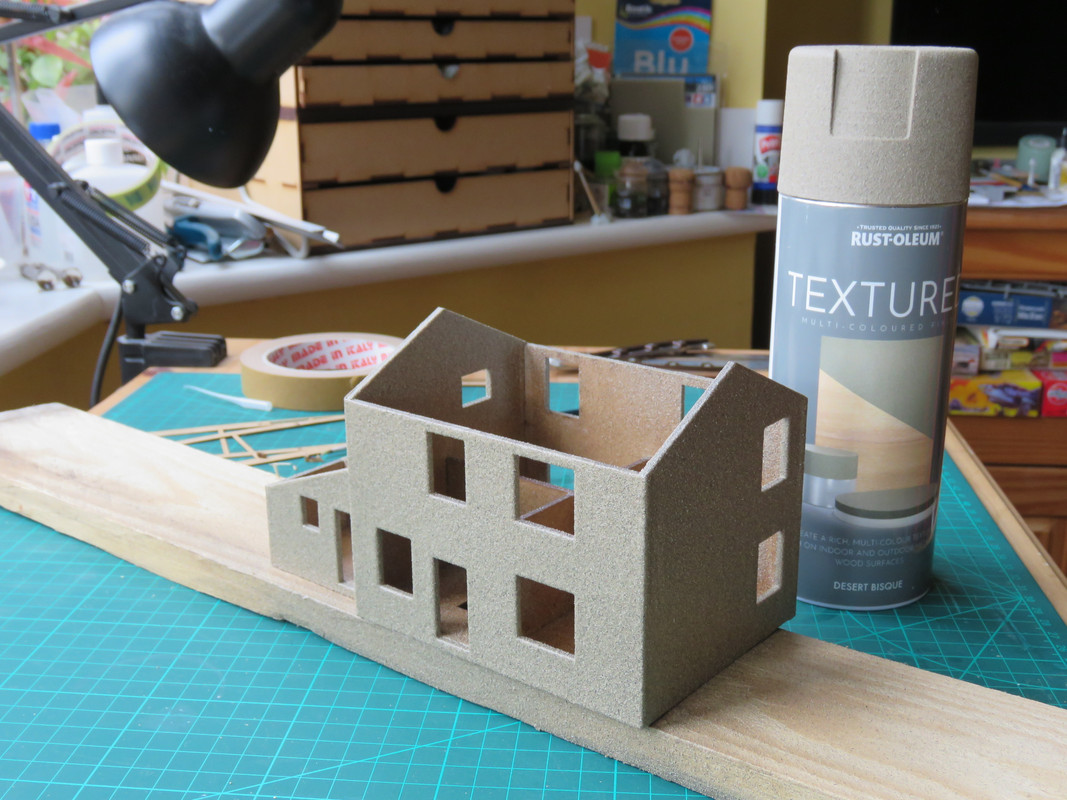
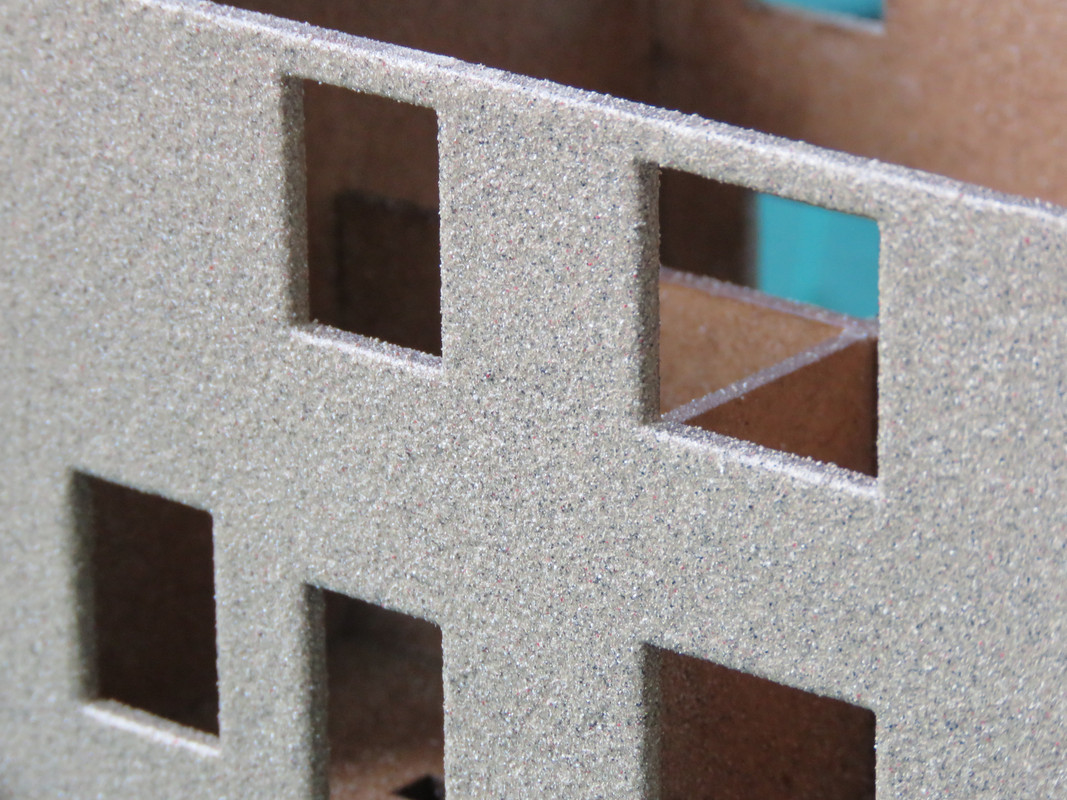


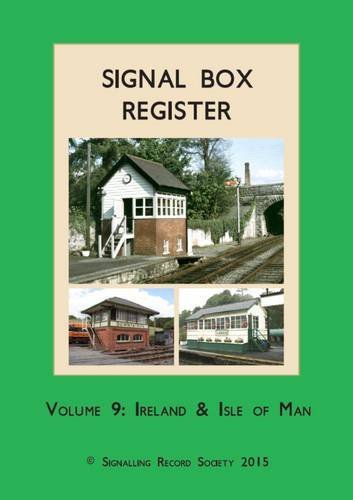


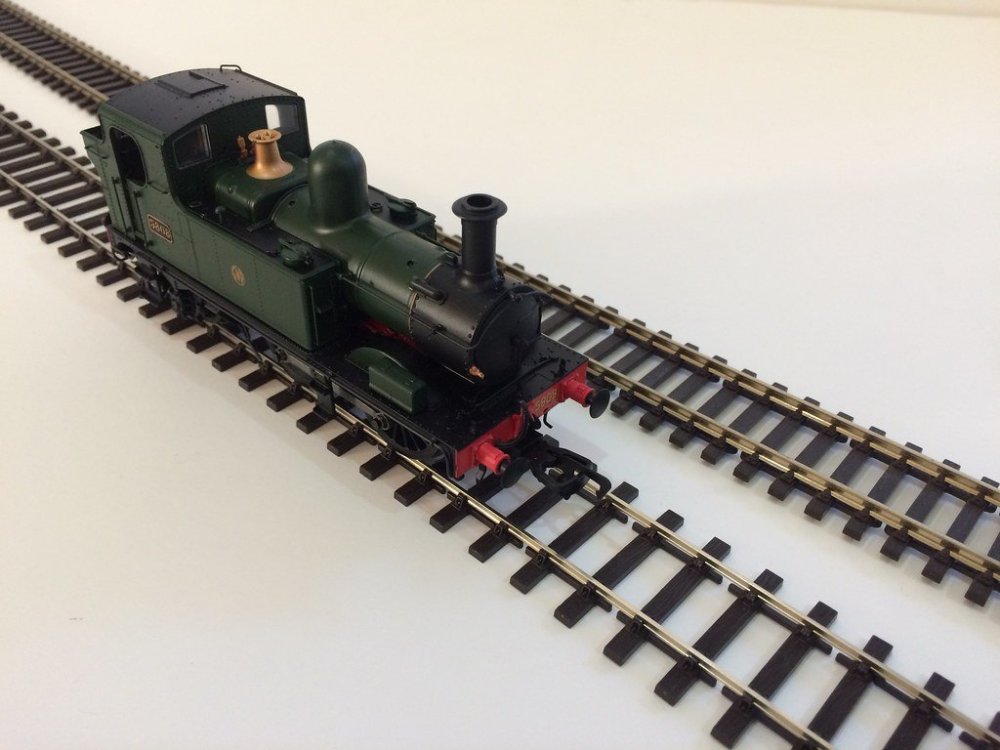
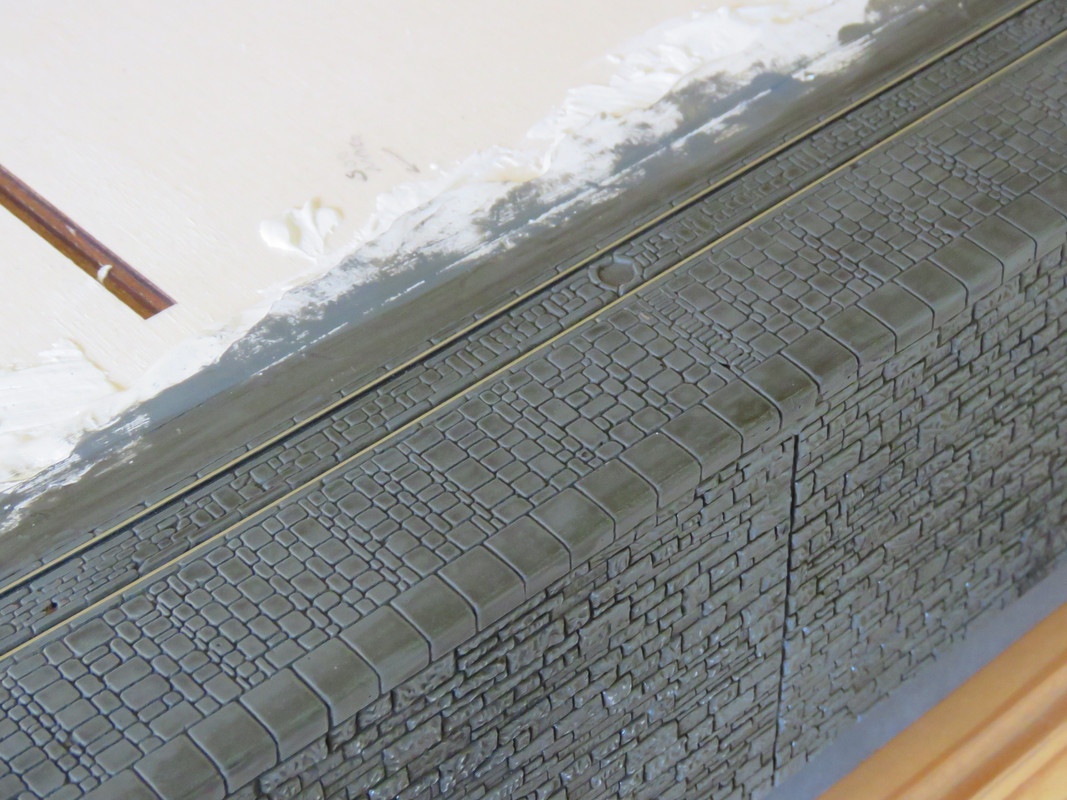



Irish models and availability
in Irish Models
Posted
I'm planning to use one of these as the basis for the M&H cabin on my project layout. Achill, I think, is a good example of a smaller cabin of this type. The ground level version seems to have the same superstructure as the full-height one.
The locking room windows seem to be much smaller on Irish cabins than on the Ratio model of Highley (Severn Valley Railway, btw).
As mentioned by airfixfan, the Signalling Record Society book is a mine of information.
Cheers,
Mark